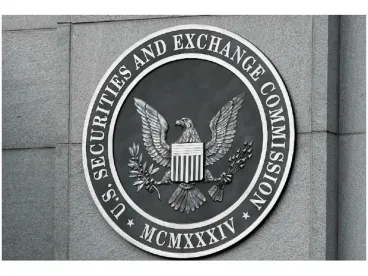For more than a decade, the Securities and Exchange Commission (SEC) has engaged in extensive investor research and has proposed and adopted new rules to address concerns regarding the increasing length, complexity and availability of investment company disclosure documents. For example, the SEC has adopted Rule 498, the fund summary prospectus rule; Rule 30e-3, which provides optional Internet availability of shareholder reports; and Rule 498A, the variable contract summary prospectus rule. Each of these rules have been constructed around a “layered” approach to disclosure.
On August 5, 2020, the SEC proposed Rule 498B and other corresponding rule amendments and related changes to Forms N-1A and N-CSR (collectively, the Proposal), which some may view as a capstone of the SEC’s investment company disclosure modernization efforts. The Proposal would make extensive and impactful changes to the current disclosure regime for mutual funds and exchange-traded funds. The Proposal would require streamlined current shareholder reports, and these focused reports, together with notices of prospectus supplements provided to shareholders throughout the year, would serve as the primary fund disclosure that existing shareholders would receive each year. Statutory and summary prospectuses would continue to be updated each year, but would only be required to be provided to new investors.
The following provides a high-level summary of the principal aspects of the proposed new fund disclosure regime.
Background
When the SEC adopted Rule 30e-3 in 2018, the agency also published a request for comment seeking feedback on retail investors’ experience with fund disclosure and on ways to improve fund disclosure. The feedback the SEC received in response to this request for comment showed that retail investors prefer concise, layered disclosure and feel overwhelmed by the volume of fund information they currently receive.
Streamlined Shareholder Reports New Central Source of Fund Information
Prospectuses and shareholder reports have historically served different purposes. In addition, shareholder reports and prospectuses present certain of the same types of information (e.g., fund performance and expenses) differently, reflecting the fact that fund prospectuses act as a selling document, projecting, for example, what fund expenses are expected to be, while shareholder reports provide information to fund shareholders about a fund’s operations and performance during the past fiscal period.
The new streamlined semiannual and annual shareholder report disclosure requirements would apply to all funds, regardless of whether a fund chooses to rely on Rule 498B. Shareholder reports would only be permitted to include information that is specifically permitted or required by new Item 27A to Form N-1A, with limited exceptions, and incorporation by reference would not be allowed. Notably, the Proposal would eliminate the fund’s president letter, interviews or commentary from portfolio managers, and general market and similar commentary. Separate semiannual and annual shareholder reports would be required for each fund (or series) within an investment company, and therefore reports covering multiple funds, which are sometimes hundreds of pages long, would need to be broken up. Separate classes of shares in a series could be covered in a single shareholder report.
Both semiannual and annual shareholder reports would focus on three principal areas of information: (1) fund expenses, (2) fund statistics, such as net assets, total number of portfolio holdings, and portfolio turnover rate, and (3) illustrations of fund holdings. Annual reports would address additional areas by providing fund performance information and a summary of material fund changes during the last year. The summary of material changes must briefly describe changes in the last year with respect to the fund’s name; investment objective or goals; principal investment strategies; principal risks; investment adviser, sub-adviser or portfolio manager; certain fee and expense changes; and other material changes. For funds that post or deliver shareholder reports electronically, the SEC is strongly encouraging the use of modern technology to provide investors with visually stimulating, interactive shareholder reports.
Because of the prominent role that new streamlined shareholder reports would play, funds could no longer rely on Rule 30e-3 to send notices of the availability of shareholder reports and then post the shareholder reports and other required documents online. Instead, funds would be required to deliver shareholder reports in accordance with preferences of shareholders, that is, on paper or electronically. However, the Proposal would not affect the availability of Rule 30e-3 for other registered management companies (such as registered closed-end funds) or registered unit investment trusts (including variable contract separate accounts).
Changes to Prospectus Delivery
Currently, funds typically provide shareholders with an updated prospectus each year. New Rule 498B would provide an optional alternative approach that uses layered disclosure to keep shareholders informed about their fund investment and any material fund changes with respect to certain topics, noted above, that occur year over year. Under Rule 498B, funds would continue to provide new investors with a prospectus (or summary prospectus) in connection with their initial investment, but funds would have the option of not delivering annual prospectus updates to shareholders thereafter. Instead, Rule 498B provides that a fund could satisfy its prospectus delivery requirements to existing shareholders in accordance with Section 5(b)(2) of the Securities Act of 1933 (Securities Act) through delivery of the new streamlined semiannual and annual shareholder reports and by complying with certain conditions. These conditions include posting a fund’s current summary prospectus, statutory prospectus, statement of additional information, and most recent annual and semiannual reports, on a website that accommodates the navigational and readability requirements prescribed by Rule 498B. These documents also must be sent, free of charge, in paper or electronic form, as requested by any person, within three business days after receiving the request. Notices of any material fund changes for which a post-effective amendment or supplement has been filed must be provided to existing shareholders within three business days, unless disclosed in the fund’s annual report. These requirements are intended to keep investors informed about their fund investments and enable them to make informed ongoing decisions about whether to buy, sell or hold fund shares.
Funds would not be required to rely on Rule 498B to satisfy their prospectus delivery requirements to existing shareholders; however, since all funds would continue to be obligated to deliver shareholder reports for existing shareholders, funds opting to rely on Rule 498B would not bear the additional costs associated with separately delivering an updating prospectus or summary prospectus to existing shareholders each year.
These cost savings could be considerable.
Notably, the proposed new fund disclosure regime reflects certain central aspects of Rule 498A, the variable contracts summary prospectus rule. For example, Rule 498A created a new “updating summary prospectus” designed to provide existing variable contract owners with certain key information as well as an update describing certain material changes that occurred over the past year.
Expanded Role for Form N-CSR
Form N-1A (new Item 27A) would continue to stipulate what information is included in semiannual and annual reports. Form N-CSR, in turn, would continue to require inclusion of a copy of shareholder reports, but it would also include more detailed information that may be of interest to more detail-oriented investors as well as financial professionals and market analysts. This additional information would include many of the disclosure items currently required in shareholder reports, but that would be eliminated in the new streamlined shareholder reports. The additional information would also be made available online and available for delivery free of charge upon request. Notably, the management information table that is currently provided in annual reports and that lists information about the fund’s directors and officers would be removed from shareholder reports and would not be migrated to a fund’s Form N-CSR filing, but would continue to be provided in the fund’s SAI. In summary, the SEC is not proposing to change the overall amount of information available to fund shareholders, only how this information is divided between shareholder reports and Form N-CSR.
Content of Fund Prospectuses
The Proposal would also amend the disclosure requirements with respect to fees and expenses in fund prospectuses (and summary prospectuses) to be consistent with the disclosure of these items in new streamlined shareholder reports. Specifically, the current fee table in the summary section of a fund’s prospectus would be replaced with a simplified fee summary focused on the total costs (or “bottom line”) of an investment in the fund, followed by a simplified version of the expense example. The simplified fee summary would consolidate the line items that currently appear under “Annual Fund Operating Expenses” into one line item showing the total amount of gross ongoing annual fees that an investor would pay; this one line item may be followed by a line item stating net fees, after fee waivers or expense reimbursements, that includes a footnote stating the expected termination date of the waivers/reimbursement arrangement. Acquired fund fees and expenses would not be presented as a separate line item and would only be disclosed in a footnote, unless a fund invests more than 10% of its total assets in acquired funds. Amounts in the fee summary would be presented as a percentage of assets, as is currently done, and in dollars assuming a $10,000 investment. The current fee table, which includes additional detail, would be moved to the statutory section of the prospectus. The expense example, which currently also assumes a $10,000 investment, plus a 5% return each year, would be shortened by eliminating the three- and five-year examples.
The Proposal also would amend prospectus risk disclosure requirements to focus on principal risks of a specific fund and would require principal risks to be disclosed in order or importance. Additionally, risk disclosure in prospectuses would be limited to principal risks, and non-principal risks would only be disclosed in the SAI. Currently, non-principal risks may be disclosed in the statutory section of the prospectus.
Amendments to Advertising Rules
While the Proposal relates primarily to mutual funds and ETFs, advertising rules for all investment companies would be amended to encourage more “balanced and consistent” expense disclosure. Presentations of fees and expenses in advertisements and sales literature would need to be consistent with relevant prospectus fee table presentations as portrayed under the modernized disclosure regime, and must be current as of the date of the fund’s most recent prospectus (although more current information is permitted). A proposed amendment to Rule 156 under the Securities Act would provide factors a fund should consider to determine whether representations in its advertisements about its fees and expenses could be misleading. However, advertisements need not include fee or expense information at all, in which case the proposed requirements regarding fee and expense presentations would not apply.
Request for Comment and Proposed Transition Period
The SEC has requested comments on numerous aspects of the Proposal, with comments due 60 days after publication of the Proposal in the Federal Register.
If the Proposal is adopted, the SEC is proposing a compliance date of 18 months after the effective date in order to allow funds sufficient time to comply with the requirements of the Proposal. Funds could rely on Rule 498B to satisfy prospectus delivery requirements for existing shareholders beginning on the effective date, provided the fund is also in compliance with related rule and form amendments, including the revised content of the streamlined shareholder reports and Form N-CSR.






 />i
/>i

